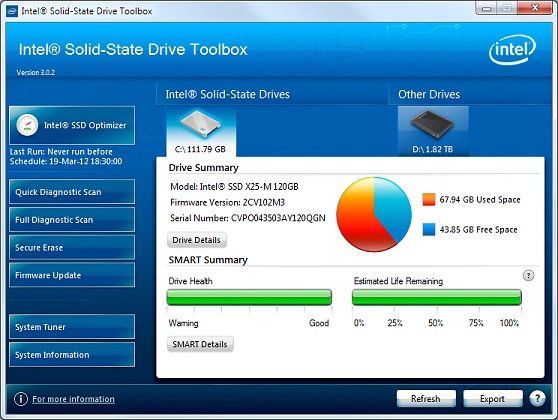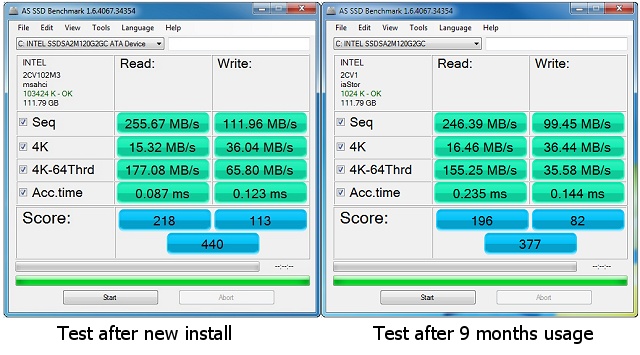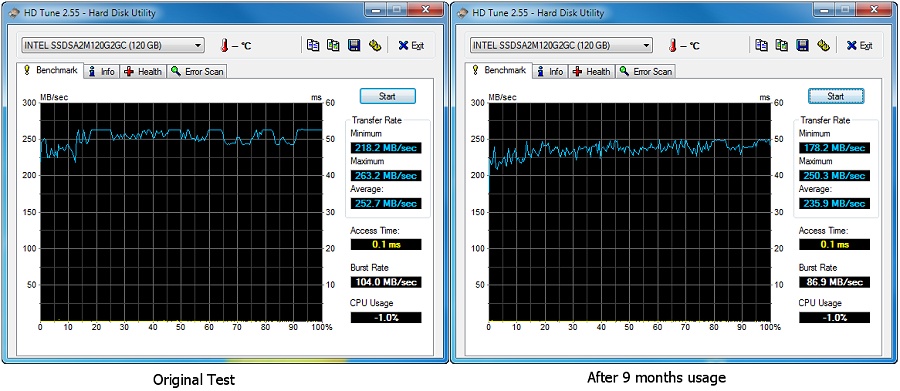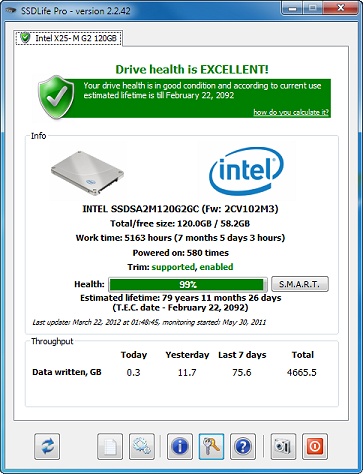Windows 7: Optimize Windows 7 for use with a Solid State Drive (SSD) (page 4)
By: Arie SlobUpdate
I wanted to update this article with some additional information and statistics. I'm not a hardware tester, nor is it my intention to become one, but one thing I find missing from most reviews are "follow-up" tests on drives that have been in use for a while.
If you start looking for SSD drive tests you'll come across all sorts of "information", usually added as comments by users with no proof to backup their claims. So I thought I'll give you a look at my drive's performance after using it for 7 months. I basically use the computer that houses my SSD drive for some 10-14 hours a day, 6 days a week.
First let's have a look at usage. How much data have I written to this drive? Intel's SSD toolbox shows 4.52TB Host Writes (15.7GB/day). So checking a bit further you can see that I'm writing 0,9GB/hour to the drive (4.52 TB host writes divided by 5151 Power-On Hours).
The new version of Intel's SSD Toolbox now also shows you the raw data for Power-On Hours, Power Cycle Count, Unsafe Shutdown Count, Host Writes and more. On the Drive Summary page of the software it also shows you drive usage, Drive Health and Estimated Life Remaining (Figure)  .
.
So how is this drive currently performing? First let's check the most widely used SSD benchmark software, AS SSD.

As you can see, there has been a drop in speed. A small drop in read speed and a slightly larger drop in write speed. Readers with a sharp eye will notice that the original test was done with the Microsoft AHCI driver (msahci) and the latest test was done with Intel's driver (iaStor). The reason I switched to the Intel driver is that while I get slightly better benchmark results using Microsoft's driver, my system won't fully switch off when shutting down (the power keeps running).
Next up is the HD Tune hard disk utility.

Again, you can see a small decrease in performance. If you'd take the Average transfer rate, the difference is around 6.7%, probably within statistical error range.

SSD Life proudly proclaims my estimated lifetime to be 79 years, 11 months and 26 days. You can be sure that the drive's flash cells have lost the ability to hold a charge long before that. In case you wonder, SSD Life probably uses some of the SMART data reported by the drive to calculate this. Since my drive's Media Wearout Indicator only reports a 1% wearout after 295 days, it estimates that in order to reach zero I need nearly 80 years.
I still think buying my SSD drive was one of the best things I did. It increased my computers performance while at the same time it decreased electricity usage; reduced noise produced by my original drives and also lowered my case temperature, which in turn means lower air-conditioning costs!
